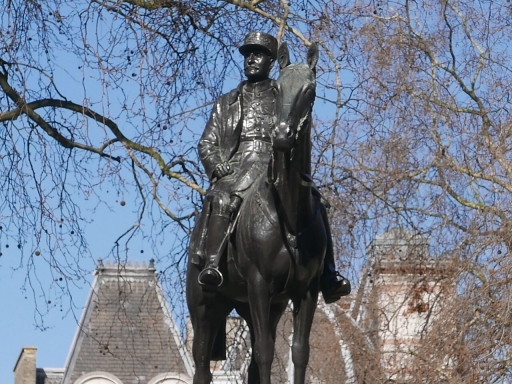July 1918 marked the fourth anniversary of the outbreak of the First World War. It had begun on 28 July 1914 with Austria-Hungary’s declaration of war on Serbia in response to the assassination of Archduke Franz Ferdinand in Sarajevo. Four years on, the pivotal events of another summer signalled the beginning of the end. Here’s a summary of some of the main developments that shaped the four months leading up to the Armistice on 11 November 1918 – together with an updated glance at forthcoming centenary commemorations.
July 4
Australian troops, supported by American units and British tanks, capture Le Hamel, a strategic vantage point for the Germans on the approaches to Amiens near Villers-Bretonneux. The operation – planned by Sir John Monash, recently appointed commander of the Australian Corps – foreshadows the successful tactics in coming Allied offensives.
July 8
Germany’s foreign minister, Richard von Kühlmann is forced to resign, having warned that the war cannot be ended by ‘military decision alone.’
July 15
The Germans begin their fifth offensive of the year, attacking in Champagne, again with the aim of drawing Allied reserves away from Northern France and the Channel Ports. But intelligence has alerted the French to Ludendorff’s intentions, and a counter-attack is launched on July 18. With American, British and Italian support the Germans are forced back at the Second Battle of Marne. From now on, the German armies will be on the back foot.
July 17
Amid civil war in Russia, the former Tsar and Tsarina, Nicholas II and Alexandra, together with their five children are executed by their Bolshevik guards at Ekaterinburg in the Urals.
July 24
Allied Commander-in-Chief Ferdinand Foch summons a meeting of the British, French and US army commanders on the Western Front – Sir Douglas Haig, Philippe Pétain and John Pershing. He tells them it’s time to return to the offensive.
August 8 – Battle of Amiens, ‘Black Day of the German Army’ & the Hundred Days Offensive
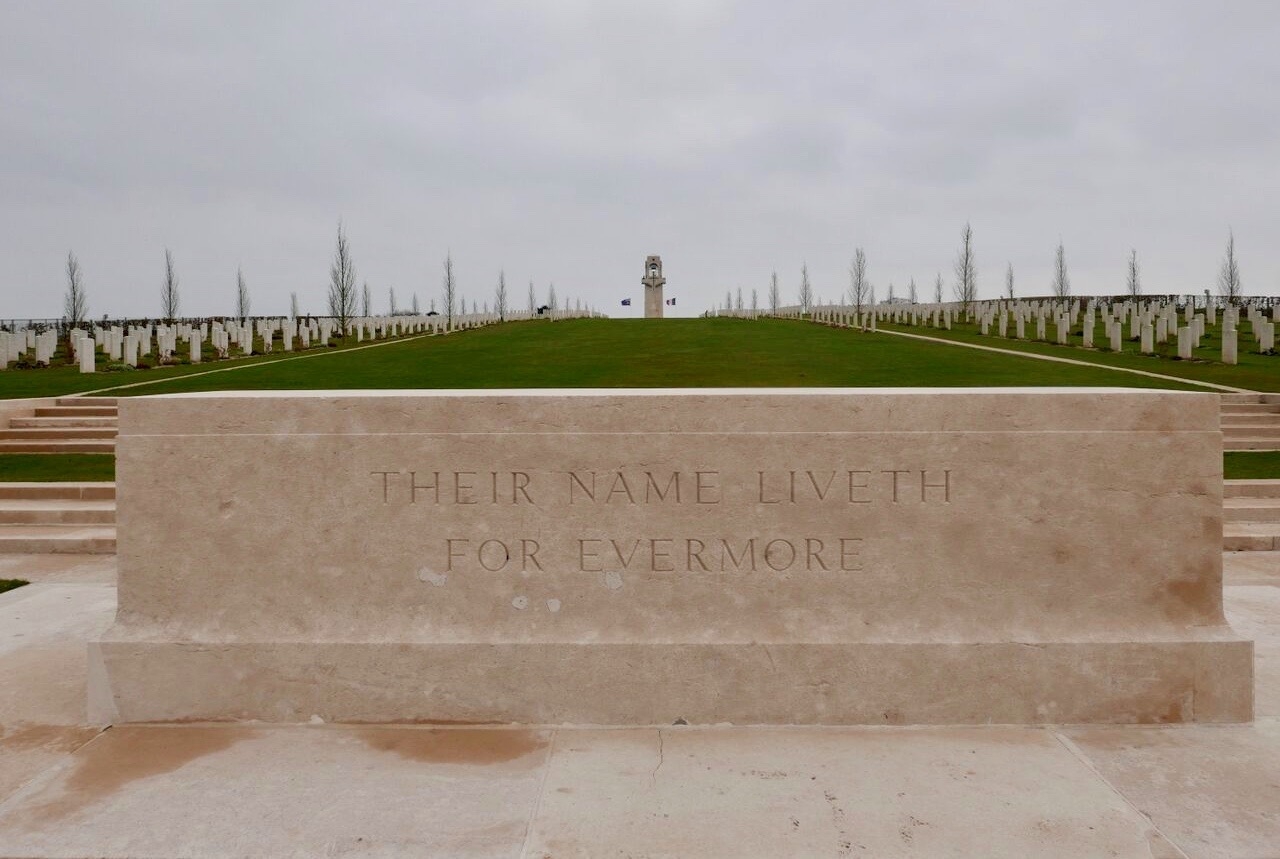 CWGC Villers-Bretonneux Military Cemetery & Australian National Memorial. More than 400 of the 2,100 Commonwealth servicemen buried here died at the Battle of Amiens. The Memorial bears the names of 11,000 Australian soldiers who fell in France from 1916-18 and have no known grave (Photo: Centenary News)
CWGC Villers-Bretonneux Military Cemetery & Australian National Memorial. More than 400 of the 2,100 Commonwealth servicemen buried here died at the Battle of Amiens. The Memorial bears the names of 11,000 Australian soldiers who fell in France from 1916-18 and have no known grave (Photo: Centenary News)
Allied forces go on the attack at the Battle of Amiens, pushing forward eight miles in a single day. Coordinated use of artillery, tanks and aircraft supports ground troops in the ‘All Arms Battle’. It is the beginning of an advance across the former Somme battlefields to the Hindenburg Line. In a sign of sagging morale, thousands of German soldiers are taken prisoner. For General Erich Ludendorff, August 8 is ‘The Black Day of the German Army.’
September 12
The Americans lead an attack on the St Mihiel Salient near Verdun, which has been in German hands since 1914. Resistance to General Pershing’s forces collapses on the first day.
US attention then switches to the Meuse-Argonne offensive at the end of September, part of Allied plans to drive the Germans from the Hindenburg Line. This clash, north of Verdun, will be America’s biggest and bloodiest battle of World War 1.
September 15
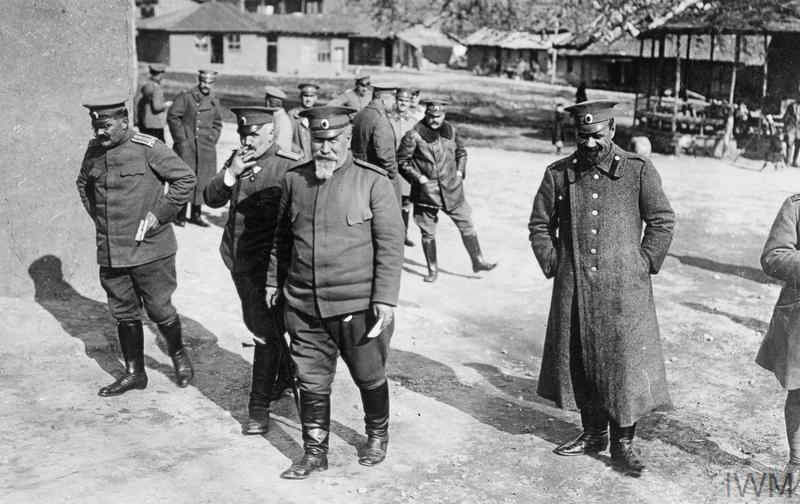
General Georgi Todorov, Commander of the Bulgarian Second Army, with staff officers in Macedonia. He became Bulgarian Commander-in-Chief in September 1918 (Photo © IWM Q 52256)
Allied troops on the Salonika, or Macedonian Front begin their final offensive against Bulgaria, under a new commander, the French general Louis Franchet d’Esperey. Two weeks later, Bulgaria is the first of the Central Powers to accept defeat, signing an armistice on September 29 just as hostilities on the Western Front are reaching a critical moment for Germany.
September 19-25
British-led forces in Palestine, under General Sir Edmund Allenby, achieve a decisive victory over the Ottomans at the Battle of Megiddo, clearing the way for the capture of Damascus and the end of the Palestine campaign.
September 27-October 4
A series of Allied offensives in Northern France breach the fortified Hindenburg Line, forcing a political shake-up in Germany. With Ludendorff now backing an approach for peace terms, based on Woodrow Wilson’s Fourteen Points, a new Chancellor is appointed by the Kaiser in the hope of achieving a favourable outcome. Prince Max of Baden is chosen for his liberal reputation.
 The St Quentin Canal, seen from the southern end of the Riqueval Tunnel, captured by American troops on September 29. This was part of operations by Australian, British and US forces to cross the canal and break the Hindenburg Line. The Germans incorporated the tunnel into their defences as a vast bunker (Photo: Centenary News)
The St Quentin Canal, seen from the southern end of the Riqueval Tunnel, captured by American troops on September 29. This was part of operations by Australian, British and US forces to cross the canal and break the Hindenburg Line. The Germans incorporated the tunnel into their defences as a vast bunker (Photo: Centenary News)
October 24-November 3
One year on from Caporetto, Italy avenges its defeat with victory over the forces of the crumbling Austria-Hungarian Empire at the Battle of Vittorio Veneto.
A provisional government of the South Slavs has already been formed by Serbs, Croats and Slovenes in the future Yugoslavia.
Breakup of Austria-Hungary
October 7 – Poles formerly ruled by Germany, Russia and the Habsburgs proclaim an independent Poland.
October 28 – the new state of Czechoslovakia declares independence from Austria-Hungary.
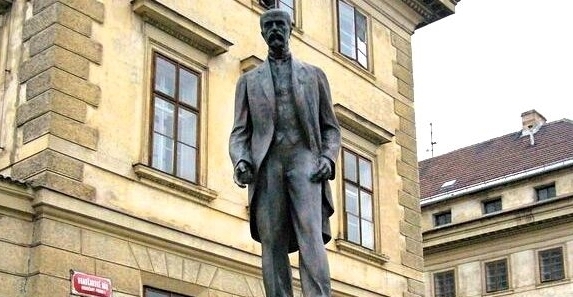 Tomáš Garrique Masaryk – first President of Czechoslovakia. Soldiers of the Czechoslovak Legion fought the Bolsheviks along the Trans-Siberian railway in 1918 as they tried to reach the West in support of the Allies (Photo: Centenary News)
Tomáš Garrique Masaryk – first President of Czechoslovakia. Soldiers of the Czechoslovak Legion fought the Bolsheviks along the Trans-Siberian railway in 1918 as they tried to reach the West in support of the Allies (Photo: Centenary News)
October 31 – Following a revolution in Hungary, protestors demand secession from the Habsburg Empire.
October 26
Erich Ludendorff, mastermind of some of the greatest German successes of the First World War, is dismissed as he prepares to continue the fight against the Allies.
German troops still resist as they fall back across Northern France and Belgium, pursued by the British, French, Americans and Belgians. On November 4, British war poet Wilfred Owen is killed at the crossing of the River Sambre.
Central Powers stop fighting
October 30: the Ottoman Empire signs an armistice with the Allies, four years after entering the First World War on the side of Germany and the Austro-Hungarian Empire.
November 3: Austria-Hungary also stops fighting in the wake of its defeat at Vittorio Veneto.
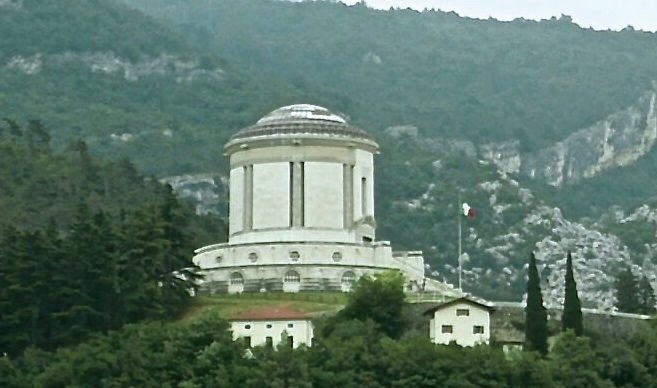 Castel Dante Monumental Shrine in Rovereto – last resting place for more than 20,000 Italian, Austrian, Czech and Hungarian soldiers, known and unknown, who died in the Alpine campaigns (Photo: Centenary News)
Castel Dante Monumental Shrine in Rovereto – last resting place for more than 20,000 Italian, Austrian, Czech and Hungarian soldiers, known and unknown, who died in the Alpine campaigns (Photo: Centenary News)
October 30
Crews of the German High Seas Fleet defy an order to sail for a final battle against the British navy. They take control of the port of Kiel, forming joint councils with disaffected workers to demand revolution.
November 7
Amid fears of revolution in Germany, political leaders warn Kaiser Wilhelm II that he will have to abdicate. A German delegation travels to Compiègne for armistice talks with Marshal Foch, the Allied Commander-in-Chief. Premature reports spread of a ceasefire agreement – this is the false armistice.
November 9
Kaiser Wilhelm – who’s at German military headquarters in the Belgian resort of Spa – gives up his throne after being told that the army will no longer fight for him. The next day he leaves for exile in the Netherlands.
November 11
The Armistice is signed at 5am on Marshal Foch’s train in the forest of Rethondes. It comes into effect at 11 o’clock, ending the Great War. Beforehand, Canadian troops fight their way into Mons, where British troops had been forced to retreat in August 1914. Private George Price, a Canadian soldier, is killed by a German sniper moments before the ceasefire comes into effect.
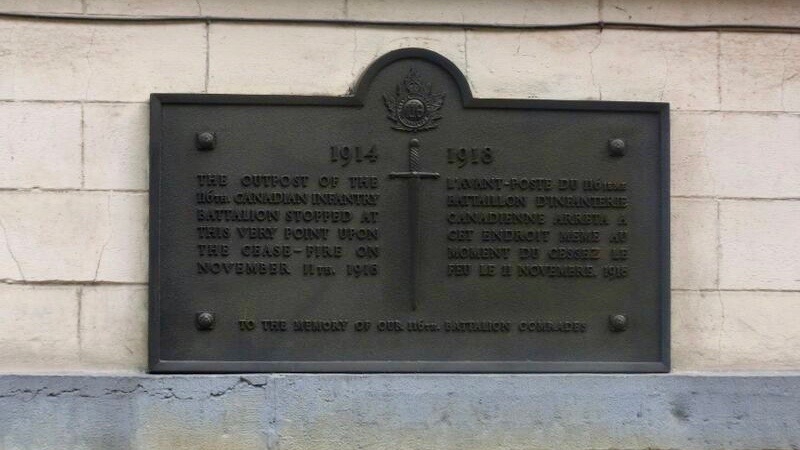 Plaque at Soignies, near Mons, where soldiers of the 116th Canadian Infantry halted on the morning of November 11. Across the road is another memorial commemorating the first clash between British and German soldiers in Belgium on the eve of the Battle of Mons in August 1914 (Photo: Centenary News)
Plaque at Soignies, near Mons, where soldiers of the 116th Canadian Infantry halted on the morning of November 11. Across the road is another memorial commemorating the first clash between British and German soldiers in Belgium on the eve of the Battle of Mons in August 1914 (Photo: Centenary News)
Also in Centenary News:
Update on Shrouds of the Somme touring displays and Armistice Centenary tribute in UK.
Final Tower of London poppy tour venues.
Compiled by: CN Editor
Images courtesy of Imperial War Museums, IWM Q 52256 (General Georgi Todorov); Centenary News
